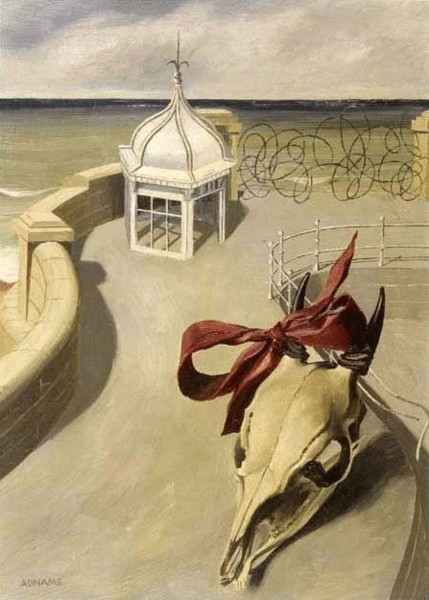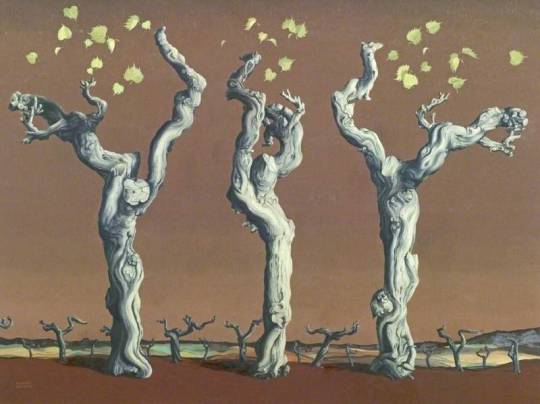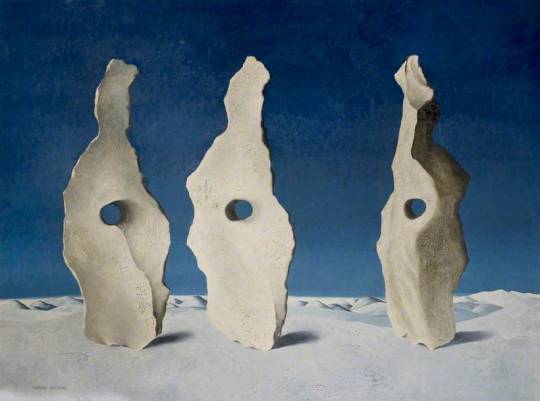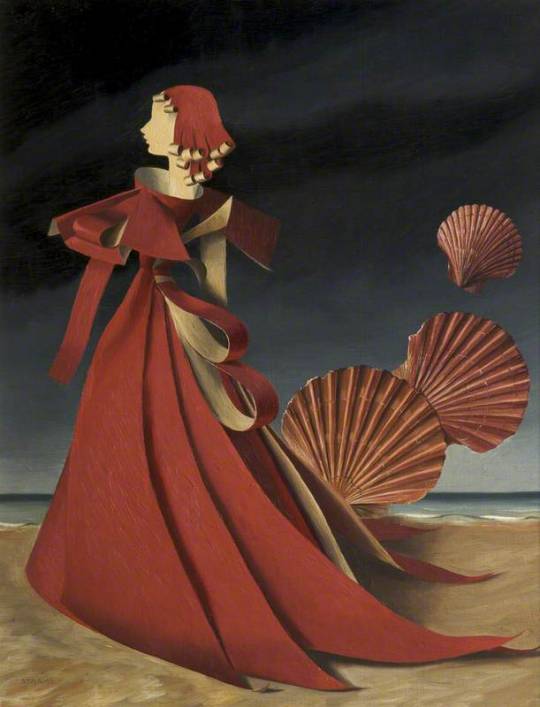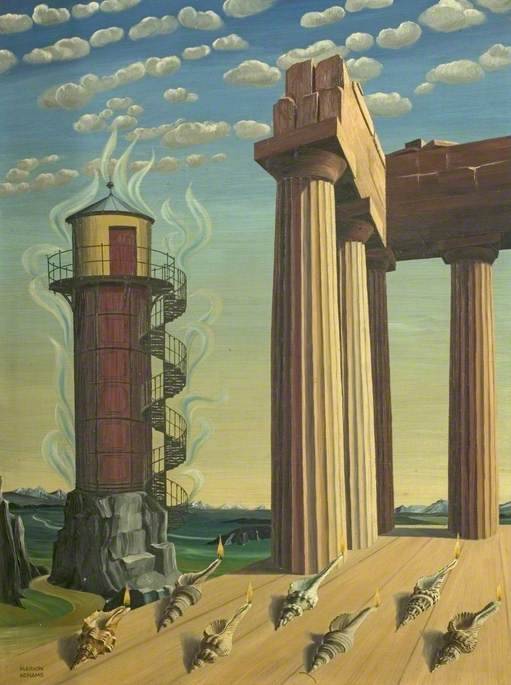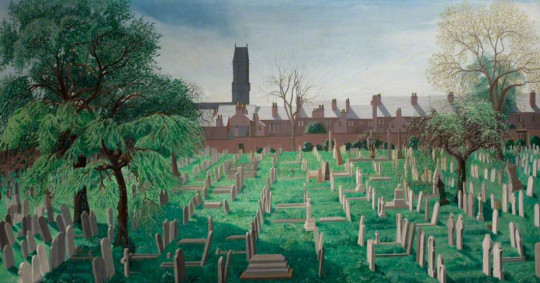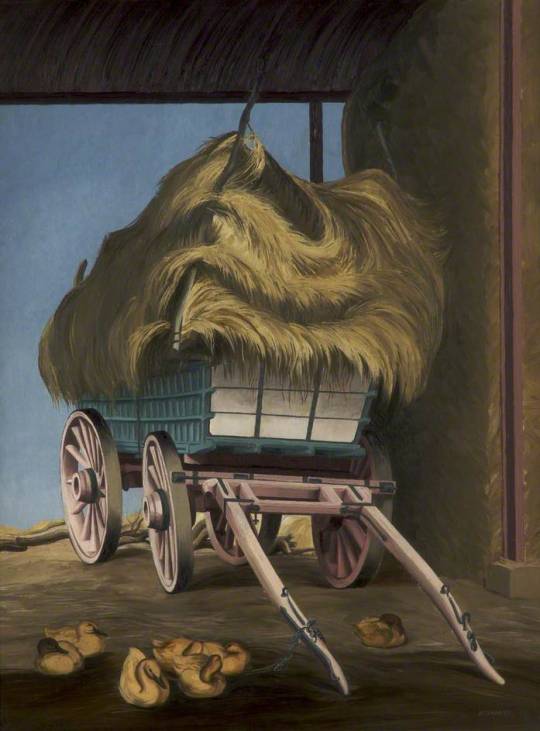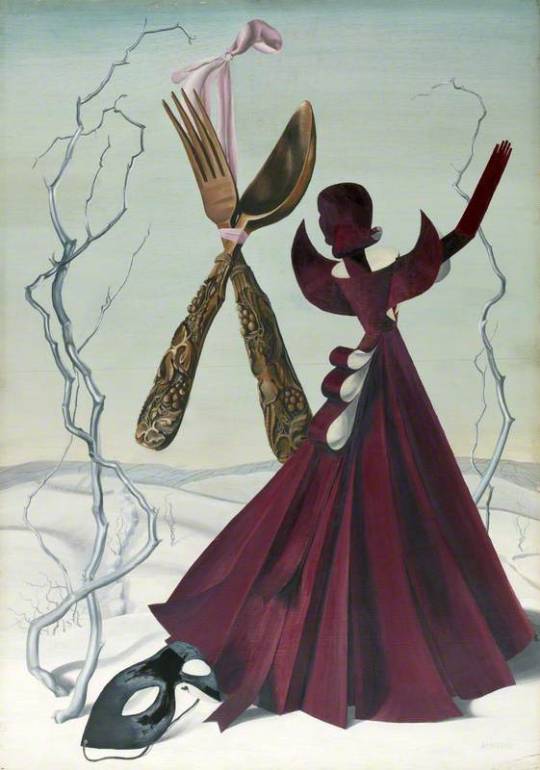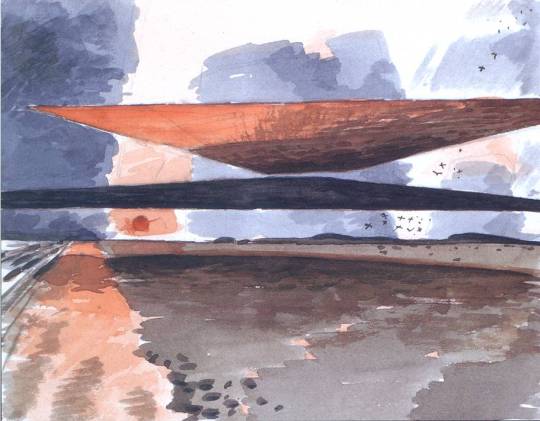
Ralph Maynard Smith – Surfaces Floating above a Beach at Sunset, 1950
Ralph Maynard Smith was born in 1904. He was the son of an English architect who had emigrated to South Africa in the late 1800s and had set up a productive architectural practice in Cape Town. He was educated in South Africa and England and even as a boy was devoted to drawing and painting.
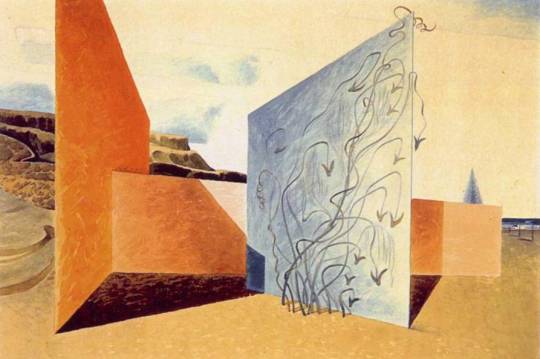
Ralph Maynard Smith – Vertical Surfaces on a Beach, 1951
In 1923, while a student at the Architectural Association in London, he travelled to Scotland, and crossed the island of Mull on foot. He spent six weeks there, finally reaching the white shell beaches of Iona. He carried with him a rucksack containing full painting gear and the five volumes of Ruskin’s Modern Painters. He drew and painted all the way, with much of the study being around Loch Scridain. He alluded ever afterwards to the importance of those weeks, but spoke only once of the day when in the silence of the mountains a running stream talked to him. From then on his devotion to the practice of art dominated his life, but was played out in secret. But if for some reason it had to be secret, how could the artist organise his life in practice to follow this ideal and achieve concrete results?
We can only deduce what his plan may have been from the evidence of his life, which outwardly showed an unwavering consistency of purpose. He seems to have determined on a scheme that was never defined or spoken of, except tangentially in his journals. He called these journals “The Ravine”, after Van Gogh’s painting of that name, and drafted his first entries while still on Mull.
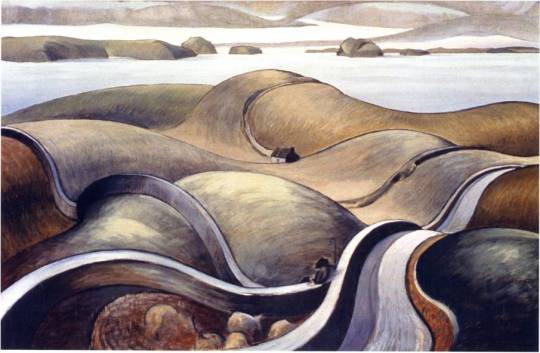
Ralph Maynard Smith – Shepherd Landscape
In 1923, as well as painting, Ralph Maynard Smith was studying architecture in London. He was one of the youngest in his year to qualify at the Architectural Association in 1925. That was followed by a year’s practical work with a London architect, which led to his associate status at the RIBA.
Soon afterwards he got a permanent job with the then well-known architects Elcock & Sutcliffe, who had just had a notable success with their Art Deco Daily Telegraph building. Later on Ralph Maynard Smith became a partner in the firm. Having landed that job in 1928, he married Geraldine Lyles and set up home in Woldingham. Their son was born in 1929 and they lived for the rest of their lives on the Surrey Downs (after a few years just moving from Woldingham to Tadworth). We see Ralph Maynard Smith’s life plan unfolding. Practicing professionally as an architect, he gave himself a measure of security, while devoting every leisure moment to realising his vision for painting.
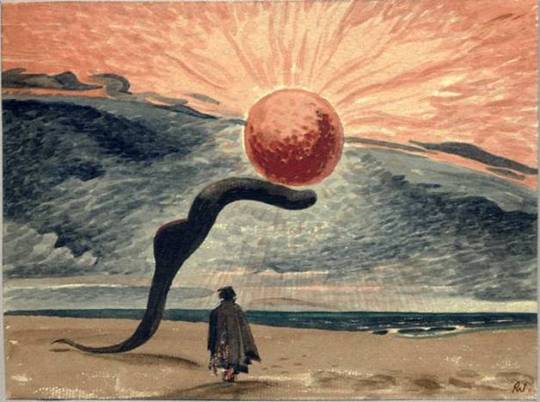
Ralph Maynard Smith – Shadows,Shadows, 1949.
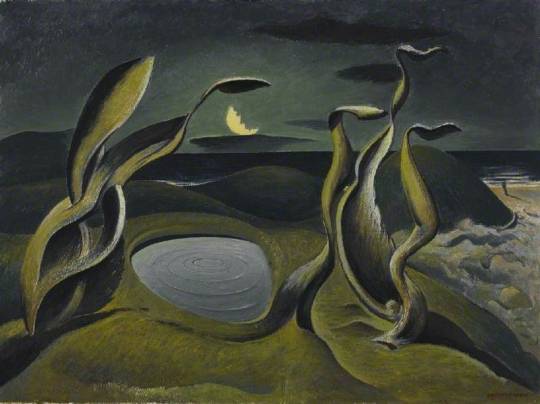
Ralph Maynard Smith – Circles and Moon, 1950
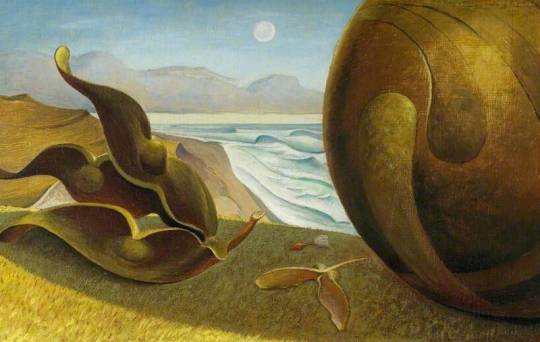
Ralph Maynard Smith – Eclipse of the Winged Embryo, 1949
Text via Ralph Maynard Smith Trust
